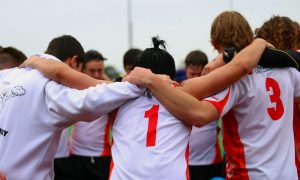In 1939 a renowned advertising executive Alex Osborne felt that many problems needed to be resolved and he became frustrated with his employee’s lack of ability to develop creative ideas for various advertising campaigns. Advertising business is all about creativity. He then began organizing group-thinking sessions and discovered a significant improvement in the quality and quantity of ideas produced by employees. It’s during those sessions Osborn coined the concept of brainstorming.
 He started writing on creative thinking, and the first notable book where he mentioned the term brainstorming is “How to Think Up” in 1942. He has explained persuasively that creativity can be unleashed through the medium of brainstorming, which is purely a group activity. Brainstorming is creativity technique in which efforts are made to find solutions for a specific problem by gathering a list of ideas spontaneously contributed by group members.
He started writing on creative thinking, and the first notable book where he mentioned the term brainstorming is “How to Think Up” in 1942. He has explained persuasively that creativity can be unleashed through the medium of brainstorming, which is purely a group activity. Brainstorming is creativity technique in which efforts are made to find solutions for a specific problem by gathering a list of ideas spontaneously contributed by group members.
Often it has been marked that brainstorming sessions lead to heated arguments, verbal blows, putting other members down, politicking the session by dividing the group etc. But, such things can be handled by a mature group leader.
Effective pedagogy: As a Professor of Management Studies, I have used brainstorming as one of the most effective pedagogy. I have seen, students feel more confident and creative after these sessions. They throw away their inhibitions. I tell them that the best ideas are the ones that solve problems or make our lives easier, but, implementing the ideas into action is extremely important. For solutions to a problem, getting good ideas is the beginning. While people often think of ideas as somebody else’s domain, with a little coaxing everybody can think creatively, may be you need to give a little boost initially through shock treatment.
Pool of ideas: In any business, when a single or few people are held responsible for generating all ideas, those ideas are likely to become stale or repetitive at some point. In life of person or business ideas can be collected from number of people. Those ideas may not be brilliant or even feasible, but as you brainstorm together your ideas may evolve into something that is fresh and effective. In a brainstorming session people come from varying backgrounds, varying cultures, interests, educational qualifications, each one thinks on the basis of his own background and therefore lot of ideas generate and you can find solution to persisting problems.
Openness required: The brainstorm facilitator’s goal is to make sure that communication is not forced in one particular direction. The leader should help keep everyone on track and set an open, nonjudgmental tone for the meeting. Criticising anybody must be avoided. The goal must be to get as much feedback, ideation, and data from the group. Brainstorming is not an essay contest or a debate. Evaluating and deciding on a solution comes later. It is essential that the leader makes this distinction clear. The leader must focus exclusively on generating ideas without prejudice. More openness brings more receptivity, creating optimal conditions for idea generation.
It facilitates the art of listening: In a brainstorming session what typically happens is ideas are produced by different people, they speak. Listening to other people’s ideas becomes important. Hearing is a passive act of sensing sound. Listening is a conscious, active process that requires you to give your full attention to the person speaking. In fact, creating an attitude of openness by not allowing evaluation in the brainstorm makes it easier for people to simply listen. The natural impulse to prove that their solution is the best is removed. The creative process is the result of linking memories or ideas stored in subconscious mind and creating new combinations. By listening to others during a meeting, you get the opportunity to receive new ideas that can combine with your own to create more new facts.
It encourages critical thinking: One major advantage of brainstorming is that it requires you to think critically to solve a certain problem or create something innovative. The more you brainstorm the better you become at encountering a problem and thinking about it critically. This means taking a topic or situation and looking at it in a logical and clear way that is free from personal bias. In life clarity in thought process always helps. Critical thinking may require you to break a topic or problem down into smaller parts. For instance, if you need to create new market segments for your product, you might need to consider various pieces of the campaigns aimed at specific segments, different packaging styles, different advertising mediums and messaging.
Brainstorming builds team spirit: When you practice brainstorming as a group, you take team ownership of a campaign, product, project or event. This means that one person isn’t left feeling like he is carrying the workload for the entire company, and it also cultivates a feeling of team ownership. Groups that practice brainstorming together may also learn how to work together better. Your brainstorming sessions will enable you to see certain talents or expertise in your co-workers of which you weren’t aware, which can be a great advantage when you need help in the future.
Types of brainstorming: there are different styles of brainstorming. Directed brainstorming is a variation of electronic brainstorming. It can be done manually or with computers. Directed brainstorming works when the solution legroom is known prior to the session. Because you know the extent of work required, those criteria can be used to constrain the ideation process intentionally. Whereas, a Guided brainstorming session is time set aside to brainstorm either individually or as a collective group about a particular subject under the constraints of perspective and time. This type of brainstorming removes all cause for conflict and constrains conversations while stimulating critical and creative thinking in an engaging, balanced environment. Individual brainstorming is done in solitary situations. It typically includes such techniques as writing, self talk, drawing, brain mapping, mind mapping, creative writing, enacting in front of mirror etc. Questioning brainstorming process involves brainstorming the questions, rather than trying to come up with immediate answers and short term solutions. The answers to the questions form the framework for constructing future action plans. Once the list of questions is set, it may be necessary to prioritize them to reach to the best solution in an orderly way.












































